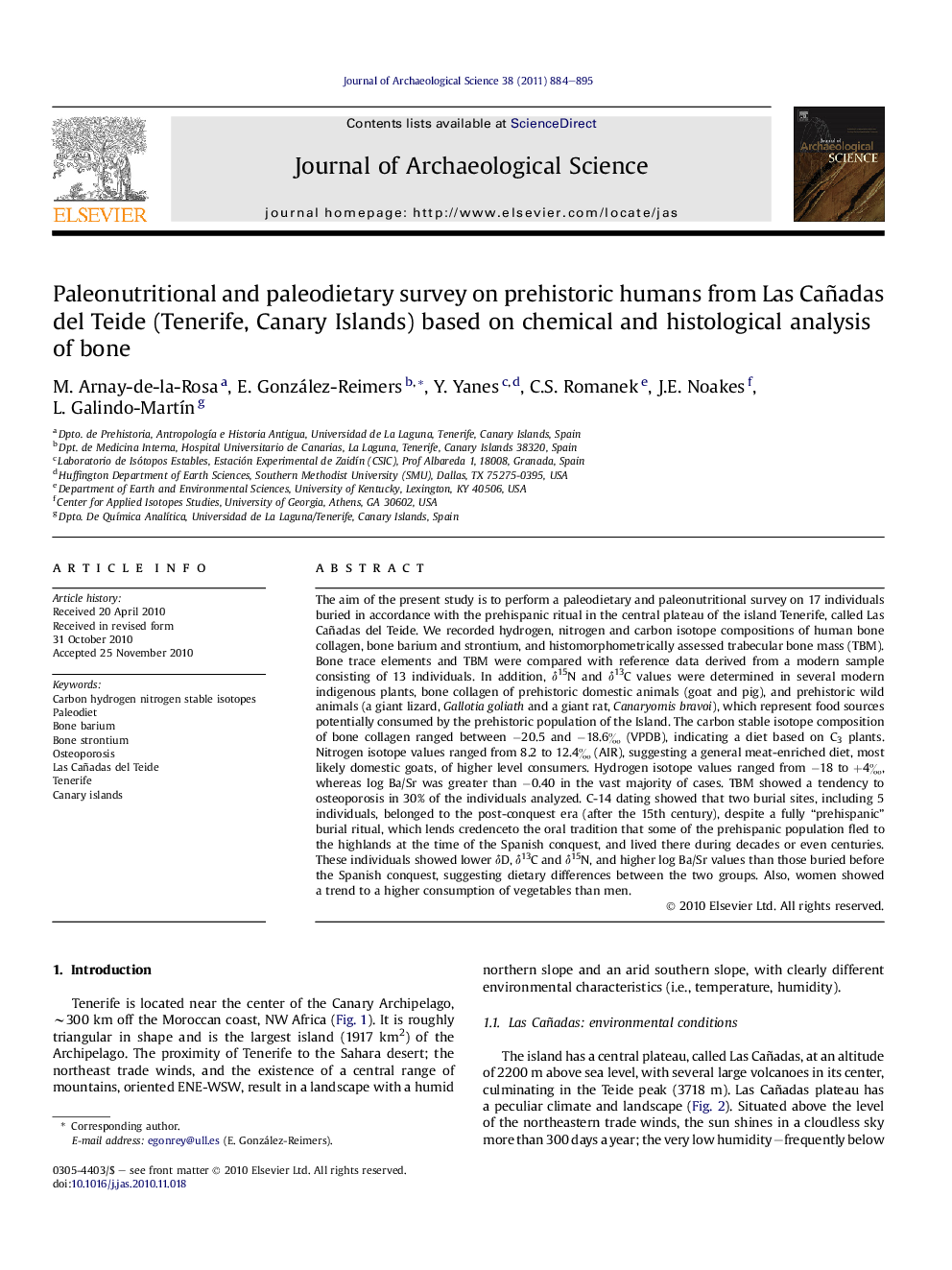| کد مقاله | کد نشریه | سال انتشار | مقاله انگلیسی | نسخه تمام متن |
|---|---|---|---|---|
| 1035984 | 943872 | 2011 | 12 صفحه PDF | دانلود رایگان |

The aim of the present study is to perform a paleodietary and paleonutritional survey on 17 individuals buried in accordance with the prehispanic ritual in the central plateau of the island Tenerife, called Las Cañadas del Teide. We recorded hydrogen, nitrogen and carbon isotope compositions of human bone collagen, bone barium and strontium, and histomorphometrically assessed trabecular bone mass (TBM). Bone trace elements and TBM were compared with reference data derived from a modern sample consisting of 13 individuals. In addition, δ15N and δ13C values were determined in several modern indigenous plants, bone collagen of prehistoric domestic animals (goat and pig), and prehistoric wild animals (a giant lizard, Gallotia goliath and a giant rat, Canaryomis bravoi), which represent food sources potentially consumed by the prehistoric population of the Island. The carbon stable isotope composition of bone collagen ranged between −20.5 and −18.6‰ (VPDB), indicating a diet based on C3 plants. Nitrogen isotope values ranged from 8.2 to 12.4‰ (AIR), suggesting a general meat-enriched diet, most likely domestic goats, of higher level consumers. Hydrogen isotope values ranged from −18 to +4‰, whereas log Ba/Sr was greater than −0.40 in the vast majority of cases. TBM showed a tendency to osteoporosis in 30% of the individuals analyzed. C-14 dating showed that two burial sites, including 5 individuals, belonged to the post-conquest era (after the 15th century), despite a fully “prehispanic” burial ritual, which lends credenceto the oral tradition that some of the prehispanic population fled to the highlands at the time of the Spanish conquest, and lived there during decades or even centuries. These individuals showed lower δD, δ13C and δ15N, and higher log Ba/Sr values than those buried before the Spanish conquest, suggesting dietary differences between the two groups. Also, women showed a trend to a higher consumption of vegetables than men.
Research highlights
► Paleodietary survey on individuals buried in the central plateau of Tenerife.
► Hydrogen, nitrogen and carbon isotope compositions of human bone collagen.
► Bone barium, strontium; histomorphometrically assessed trabecular bone mass (TBM).
► Preservation of “prehispanic lifestyle” after the Spanish conquest (Assessed by C-14).
► Dietary change after the conquest (less meat and marine food, more plants).
Journal: Journal of Archaeological Science - Volume 38, Issue 4, April 2011, Pages 884–895